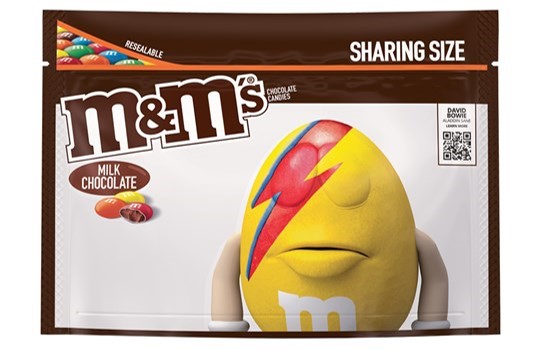
Is it me or is this year flying by or what?
Welcome to February, CES feels like a year ago, and the planning for the first NAB since 2019 is well underway. 2022 is rolling along fast.
There’s a lot to talk about in the world of marketing and technology. And today’s trip into our media mélange will be time well spent. I’ve got three interesting stories that should get those juices flowing.
Let’s start with one of radio’s prime listening locations – the office.
Item #1: Work to the beat of your own music – We are living in the age of personalization and customization. That’s clearly one of the advantages of playlist services like Spotify and Pandora.
And the office is a listening location important to all audio competitors because multiple people share the same space and because listening duration can last hours.
For broadcast radio, “listen at work” has long been a marketing staple. AC stations, in particular, have pinned their successes on convincing worker bees to tune in. Over the years, direct mail, telemarketing, and direct mail to the workplace have become standard tactics for encouraging at-work listening.
And in the ’90s, I convinced many of our Classic Rock stations to embrace the “Workforce Payroll” marketing promotion, where listeners could “stay on the clock,” typically earning $100 an hour, just for having the station on at work.
Thanks to COVID, all those radio promotions seem like they’re from another era. Now, we’re just trying to figure out how to cajole employees to return to their desks and cubicles – at least a couple days a week.
When they get back to the office, some may be in for a surprise. Marketing Brew’s Alyssa Meyers reports that two companies are working on “carefully curated sound” in work spaces, subtly designed to make us more productive in the morning, energize us in the afternoon, and to help us brainstorm in groups.
Made Music Studio produces audio signatures for companies. Working with software company, Spatial, they’re creating “immersive audio experiences” for retail stores, theme parks, and corporate settings that experiment with audio ambience.
“immersive audio experiences” for retail stores, theme parks, and corporate settings that experiment with audio ambience.
This includes different sounds for different parts of the office space – the lobby, communal working spaces, conference rooms.
A similar concept from sound production agency, Sixième Son, called “zoning” – allows retail operations to play unique sound in different parts of the store, so the soundscape matches the products. Colleen Fahey, the agency’s U.S. managing director for sonic branding, says it’s all about sound complementing the work environment:
“People respond to coherency. They just feel better when things seem to match.”
You have to wonder whether employees will still be able to bring headphones, ear buds, or AirPods to work.
And will clusters of stations promote specific brands for different parts of the store?
Stay tuned.
Item #2: M&Ms get classic – You have to give brands credit for adapting to the times. That’s what M&Ms did recently when they updated their character mascots for each of their colors. (They don’t “taste” different, do they?”)
In a makeover that only David Lee Roth or Tucker Carlson could appreciate, M&Ms said the two characters have been remade to represent “a more dynamic and progressive world.”
Here’s a “before & after” look at the characters. If you look carefully, you’ll see the two female-looking M&Ms (brown and green) are a bit different.

Ms. Brown’s high heels are more sensible now, while Ms. Green’s has traded her white go-go boots and flirty visage for a pair of trainers. This started a kerfuffle between Fox News’ Tucker Carlson and CBS’ The Late Show‘s Stephen Colbert that apparently proves any controversy (aside from food poisoning) may be good for brands.
But perhaps the more interesting news for the M&Ms team is their new initiative to update their packaging by paying tribute to musical artists. (Maybe people tend to eat candy while listening to music.)
music.)
The company’s Album Art packages highlight albums from Kacey Musgraves, H.E.R., Rosalía, and classic artist, David Bowie – covering a lot of musical ground. The Bowie cover is the iconic Aladdin Sane album cover, originally released in 1973, nearly a half century ago.
You have to wonder why the M&Ms’ team didn’t choose Who’s Next or Nevermind for their rock tribute packaging.
Below is a :15 video that showcases the album covers through the lens of M&Ms.
https://www.youtube.com/watch?v=dGcDNnZ_rJ0
Item #3: In search of…radio – OK, this one is admittedly a bit pie in the sky, but given the acceleration of technology in recent years, you never know. The idea is to make radio “searchable,” a topic brought to my attention by radio engineering guru, Gary Cline. He sent me a Medium story from 2018 called “Making radio searchable.”
The team working on this mission focused on spoken word content (170 stations, mostly talk and Public Radio formated) in a public sphere search engine, Earshot.
The story gets very technical (beyond my knowledge level), but shows how an inventory of radio can be code for what they call “speaker diarization,” focused on who is speaking and for how long.
A fascinating takeaway: Men speakers outnumber women speakers by roughly a 4:1 margin. And males speak longer than females. The things you can do with search.
 In recent months, we’re seeing search show up in interesting ways in radio. KQED (public radio in San Francisco) is working with Google. A story in Inside Radio tracks how this initiative’s goal is to make radio news and podcasts more audio searchable.
In recent months, we’re seeing search show up in interesting ways in radio. KQED (public radio in San Francisco) is working with Google. A story in Inside Radio tracks how this initiative’s goal is to make radio news and podcasts more audio searchable.
Like all these technologies, search is made possible when audio content is first converted to text. A third entity – KungFu.AI has a speech-to-text technology that does just that. The key, of course, is accuracy and the elimination of transcription errors, especially in news.
Projects like this one open the door wider to enabling better podcast discovery via search, especially important with more than 2.4 million in existence.
And then there’s Veritone, enabling radio search that can be utilized on the commercial front, proving to advertisers that stations and personalities are delivering the number of mentions and the length of commercials promised.
length of commercials promised.
A great podcast episode (under 30 minutes) is worth your time. Produced by Veritone, this edition of “Adventures In AI” features an interview with the company’s Regional Sales Director, Jeanette Kadow (pictured). In the podcast, she discusses Veritone’s search engine, seamlessly converting radio audio to text.

Jeanette believes – and she’s probably right – that radio often overdelivers for clients, and yet cannot effectively compete with digital players who have the attribution tools.
We’re getting closer to that day when radio content – on music and spoken word stations – will, in fact, be searchable. And that will create a more level playing field for radio marketers, programmers, and of course, the audience.
This is where SiriusXM is headed, and radio broadcasting will need to get there, too.
- Media And Technology In 2025: Believe It Or Not! - April 18, 2025
- In Radio, You Just Never Know - April 17, 2025
- The Secret To Making A Great Podcast (And Great Radio) - April 16, 2025




Personalized, local, color radio!
I was thinking along the same lines when I read the M&Ms part of the blog, Clark.
Chuck Blore would have found a way to tie it in to KFWB.
Oh. (Tongue in cheek) what’s a KFWB?
I’m reminded of earlier posts in Item 1 – “What’s Old is New Again” – can you say “Muzak”?
Funny, I Googled Muzak while on my way to writing the post. And the great thing is, a majority of the people reading the blog have no idea what we’re talking about.